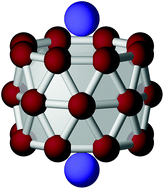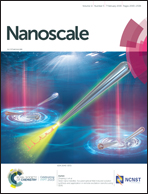Li2B24: the simplest combination for a three-ring boron tube†
Abstract
Herein we introduce a strategy employing lithium atoms as a scaffold to stabilize an embryo for boron tubes. The systematical exploration of the potential energy surface via evolutionary algorithms allowed us to find that Li2B24 adopts a tubular structure formed by three stacked rings of eight borons each with two lithium atoms capping the tube. The lithium atoms are essential for stabilization because of the strong electrostatic interaction between the Li cations and the boron framework, and concomitantly, they compensate for the energy cost of distorting a quasi-planar or double ring B24 cluster.



 Please wait while we load your content...
Please wait while we load your content...